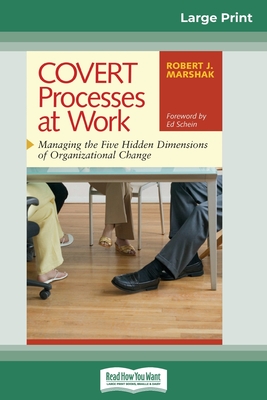
Marshak, Robert J.
product information
description
ses that impact organizations but usually remain unseen, unspoken, or unacknowledged. Collectively called covert processes, they include hidden agendas, blind spots, organizational politics, the elephant in the room, secret hopes and wishes, tacit assumptions, and unconscious dynamics. Although covert in their workings, these processes can be insidious in their impacts, often shaping outcomes without our fully realizing it. In some ways this book can be seen as an extension of the pioneering work by organizational psychologist Ed Schein on process consultation, especially on the importance of being able to decipher hidden forces. ''One of the most important functions of process consultation is to make visible that which is invisible'' (1999, p.84). Toward that end, this book provides frameworks, principles, and practices that will be useful in diagnosing and addressing the hidden dynamics that can impact what you are doing and how it gets done. Although the ideas are grounded in a wide range of social science research and theory, there is little attention to definitions and literature reviews of specific theories or types of covert processes. A thematic bibliography is included for readers interested in exploring the ideas that helped shape the book. Finally, the book integrates all hidden dynamics instead of focusing on one or two. It asks and answers the question: What do all types of covert processes have in common and what can you do about them?
member goods
No member items were found under this heading.
notems store
Return Policy
All sales are final
Shipping
No special shipping considerations available.
Shipping fees determined at checkout.







